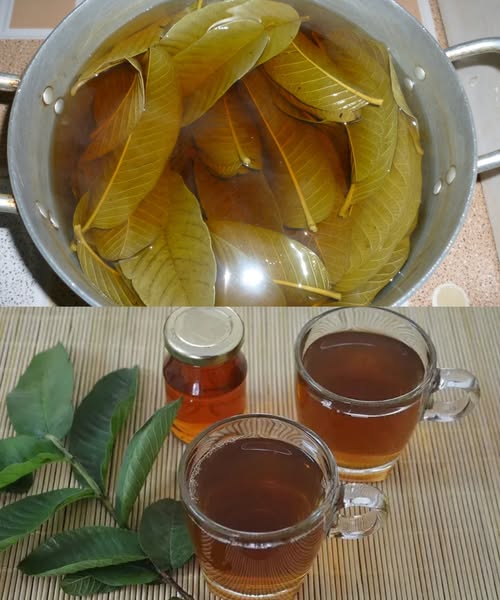Introduction: Nature’s Pharmacy May Be Growing in Your Backyard

Imagine walking into your backyard and picking leaves that could potentially ease pain, reduce inflammation, accelerate wound healing, or even help fight infections. Sounds magical? Meet Kalanchoe — the succulent powerhouse hailed in traditional medicine systems as a natural remedy hub.
Whether you’re a home gardener, herbal enthusiast, or simply seeking natural alternatives to pharmaceuticals, this plant deserves your attention. From its anti-inflammatory and antimicrobial properties to its potential role in cancer research, Kalanchoe has sparked global curiosity.
In this comprehensive guide, we’ll explore why Kalanchoe is considered a natural pharmacy in your garden, address common questions, and provide actionable tips to unlock its full potential.
What Is Kalanchoe?
Kalanchoe (pronounced kal-an-KOH-ee) is a genus of succulent plants with over 125 species, primarily native to Madagascar and tropical Africa. The most widely used medicinal varieties include:
- Kalanchoe pinnata (also known as Bryophyllum pinnatum or “Miracle Leaf”)
- Kalanchoe daigremontiana (commonly called Mother of Thousands)
- Kalanchoe blossfeldiana (mostly ornamental but mildly medicinal)
These plants are easily recognizable for their thick, fleshy leaves and rapid reproduction capabilities. But beyond their beauty lies a treasure trove of therapeutic benefits backed by centuries of use in Ayurvedic, African, Chinese, and South American folk medicine.
13 Incredible Benefits of Kalanchoe: Why It’s a Natural Pharmacy
1. 🧪 Potent Anti-inflammatory Effects
Scientific studies confirm that Kalanchoe extracts contain flavonoids and triterpenoids, which inhibit inflammation and ease conditions like arthritis and joint pain.
2. 🦠 Natural Antibacterial and Antiviral Properties
Kalanchoe has demonstrated broad-spectrum antimicrobial effects, especially against E. coli, Staphylococcus aureus, and respiratory viruses. Perfect for natural wound care or cough relief.
3. ⚔️ Supports Immune System Function
The plant boosts immune defenses through antioxidant compounds that help your body resist oxidative stress and infection.
4. 🩹 Accelerates Wound Healing
Research shows that topical application of Kalanchoe juice promotes faster tissue regeneration, making it a go-to for burns, scrapes, and cuts.
5. 🧠 May Aid in Anxiety and Mood Regulation
In folk medicine, the juice of Kalanchoe pinnata is used as a calming agent. Recent research suggests the plant influences the GABA pathway, promoting mental relaxation.
6. 💧 Soothes Respiratory Issues
Kalanchoe leaf juice is traditionally used to relieve cough, asthma, bronchitis, and shortness of breath. It works by relaxing bronchial tubes and clearing mucus buildup.
7. 🔬 Potential Anticancer Properties
Exciting early-stage studies suggest that certain Kalanchoe species may inhibit the growth of cancer cells, particularly liver, breast, and blood cancers, due to bufadienolides.
8. 🌡️ Fever and Infection Relief
Used in traditional medicine as a natural fever reducer, especially during malaria outbreaks and flu seasons.
9. 💗 Promotes Heart Health
The plant helps manage blood pressure and has shown cardioprotective effects in animal studies, thanks to its rich antioxidant content.
10. 🦴 Bone and Joint Health
By reducing inflammation and oxidative stress, Kalanchoe supports joint mobility and bone strength, especially in aging adults.
11. 🧬 Boosts Cellular Regeneration
Its high vitamin C, B, and E levels support cell renewal, skin health, and detoxification.
12. 👶 Safe Natural Remedy for Kids (With Supervision)
Mild doses of Kalanchoe leaf juice are used for treating cough and skin rashes in children across parts of Africa and India.
13. 🧴 Great for Skin: Acne, Rashes, and Sunburn Relief
Applied as a paste or toner, Kalanchoe leaf pulp can calm irritated skin, reduce acne, and even help with eczema.
Frequently Asked Questions About Kalanchoe
✅ Is Kalanchoe safe for daily use?
In small, monitored doses, yes. However, always consult a health professional before internal use, especially during pregnancy or while on medication.
🐾 Is Kalanchoe toxic to pets?
Yes. Kalanchoe contains compounds that are toxic to cats, dogs, and birds. Always plant it out of their reach.
🥗 Can Kalanchoe be eaten raw?
Some cultures chew the leaves or consume the juice, but moderation is crucial. Overconsumption may lead to nausea or diarrhea.
🌱 How do I grow Kalanchoe at home?
Very easily! It thrives in sunny windowsills, pots, or garden beds. Water moderately and avoid overwatering. It also propagates effortlessly from leaf cuttings.
🧴 How do I make Kalanchoe juice or ointment?
- Juice: Blend fresh leaves, strain, and store in a clean glass container for 2–3 days in the refrigerator.
- Ointment: Crush the leaves into a paste and mix with coconut or olive oil for skin application.
📊 What are some stats that back up Kalanchoe’s benefits?
- A 2021 Journal of Ethnopharmacology study found that Kalanchoe extracts suppressed tumor growth by up to 60% in lab tests.
- In 2022, researchers noted a 55% wound healing improvement within 5 days of topical Kalanchoe use versus untreated skin.
How to Use Kalanchoe at Home: 5 Easy Remedies
1. Cough Relief Syrup
Mix 1 tsp of Kalanchoe juice with 1 tsp of honey. Take once daily for up to 3 days.
2. Burn Soother Paste
Crush 2 leaves into a fine paste and apply to burns. Rinse off after 15 minutes.
3. Anti-Acne Toner
Boil 5–6 leaves in water. Cool, strain, and use as a facial spritz to reduce breakouts.
4. Joint Pain Massage Oil
Mix Kalanchoe paste with warm castor oil and massage into aching joints.
5. Stress & Insomnia Juice Shot
Take 5 ml of fresh juice in the evening for a calming, mood-regulating effect.
Business & Commercial Potential: Why Grow Kalanchoe?
For home remedy brands, herbal apothecaries, and health-conscious retailers, Kalanchoe offers huge commercial and sustainability value.
- 🌿 Low maintenance crop with year-round production potential.
- 🌱 High demand for plant-based skincare, supplements, and tinctures.
- 📈 Global market for herbal medicine is projected to exceed $600 billion by 2030, and Kalanchoe is a rising star.
Urgent Note on Safe Use
While Kalanchoe offers natural healing, it’s not a replacement for medical care in serious conditions.
Always consult a qualified practitioner before integrating herbal remedies into your treatment regimen.
Final Thoughts: Let Your Garden Be Your Medicine Cabinet
With its wide-ranging therapeutic properties, simple care requirements, and centuries of successful use, Kalanchoe stands out as a natural treasure.
In a world leaning toward holistic, sustainable, and chemical-free solutions, this mighty succulent earns its title as “a natural pharmacy in your garden.”
So why wait? Start growing Kalanchoe today and unlock a world of wellness — leaf by leaf.


